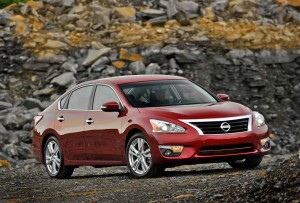Surging gas prices – which have now topped $4 a gallon in much of the country – are sending motorists scurrying to dealers looking for more fuel-efficient vehicles.
There’s been a near lock-step between gas prices and vehicle mileage this year — consumers opting for more fuel-efficient vehicles last spring when pump prices neared record levels. Then, as prices slipped in May, mileage numbers also dropped. August saw both gas prices and fuel-efficiency rise once again, according to the University of Michigan Transportation Research Institute’s monthly fuel economy index.
The average fuel economy of new vehicles sold in the U.S. in August was 23.8 miles per gallon –up 0.2 mpg from July, and up 3.7 mpg or 18% from October 2007, according to UMTRI’s Eco-Driving Index.
“The improvement from July to August most likely reflects the increased price of gasoline,” analyst Michael Sivak noted.
There were some countervailing trends: notably, the August sales figures showed that pickup trucks sales also increased during August.
But while pickup trucks remain a key tool in American economic life, fuel-economy is now a primary factor in consumers’ ultimate choice. The U-M index, despite a dip earlier in the summer when the price of gasoline dropped in many parts of the country, has continued to creep upward for most of the year, suggesting consumers are looking for greater fuel efficiency in the face of rising fuel costs.
In addition, manufacturers such as Hyundai and Ford have promoted the efficiency of their new vehicles, touching off what one Honda executive described recently as a ‘fuel-economy arms race.” Several manufacturers now offer conventionally powered vehicles that get better than 40 miles per gallon, a figure unheard of as recently as three years ago. Many hybrids are nudging closer to 50 mpg.
The U-M Eco-Driving Index (EDI)– also indicates the average monthly emissions generated by an individual U.S. driver–stood at 0.82 in June. That was unchanged from May but an improvement of 18% since October 2007. The EDI takes into account both vehicle fuel economy and distance driven.
The average sales-weighted fuel economy was calculated from the monthly sales of individual models of light-duty vehicles (cars, SUVs, vans, and pickup trucks) and the combined city/highway fuel-economy ratings published in the EPA Fuel Economy Guide for the respective models. For both monthly and model year averages, sales-weighted means were calculated.
For very low sales-volume manufacturers such Ferrari, Rolls-Royce or Bentley all vehicle models for that manufacturer were aggregated and one average fuel-economy rating was calculated..

